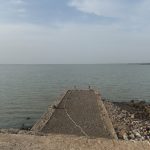The climate change forecasts for Ethiopia predict higher temperature and rainfall and increased variability in rainfall with periodic severe droughts and floods. The increased weather variability poses a check on the extent of Ethiopia’s agricultural transformation unless it is supported with improved agricultural water management such as irrigation to make smallholder farming resilient to adverse weather events. This study analyzes the role of irrigation on agricultural transformation in Ethiopia by systematically comparing households with irrigated and non-irrigated plots on key agricultural transformation and welfare indictors (i.e., intensification, commercialization, and consumption expenditures). The study used a representative data from the four main agriculturally important regions of the country and employed an endogenous switching regression approach that address potential biases from placement of irrigation schemes and the selfselection of farmers to adopt irrigation on their plots. The approach allows for counterfactual analysis on the effect of irrigation if it is adopted on plots or in households without current irrigation and the counterfactual realizations of outcome variables if irrigated plots were not irrigated or irrigating households were relying only on rainfed agriculture. The main results show a positive and significant effects of irrigation on intensification, commercialization, and household welfare. Specifically, the results show that farm households with irrigated plots: (i) use more fertilizer and agrochemicals; (ii) sold sizable share of their harvest; and (iii) spend more on food and non-food expenditures. The counterfactual analysis on what would have been the effect of irrigation on currently non-irrigated plots indicate a stronger result across our outcome indicators, suggesting further the importance of expanding irrigation in accelerating agricultural transformation and welfare improvement in Ethiopia. Read more.
